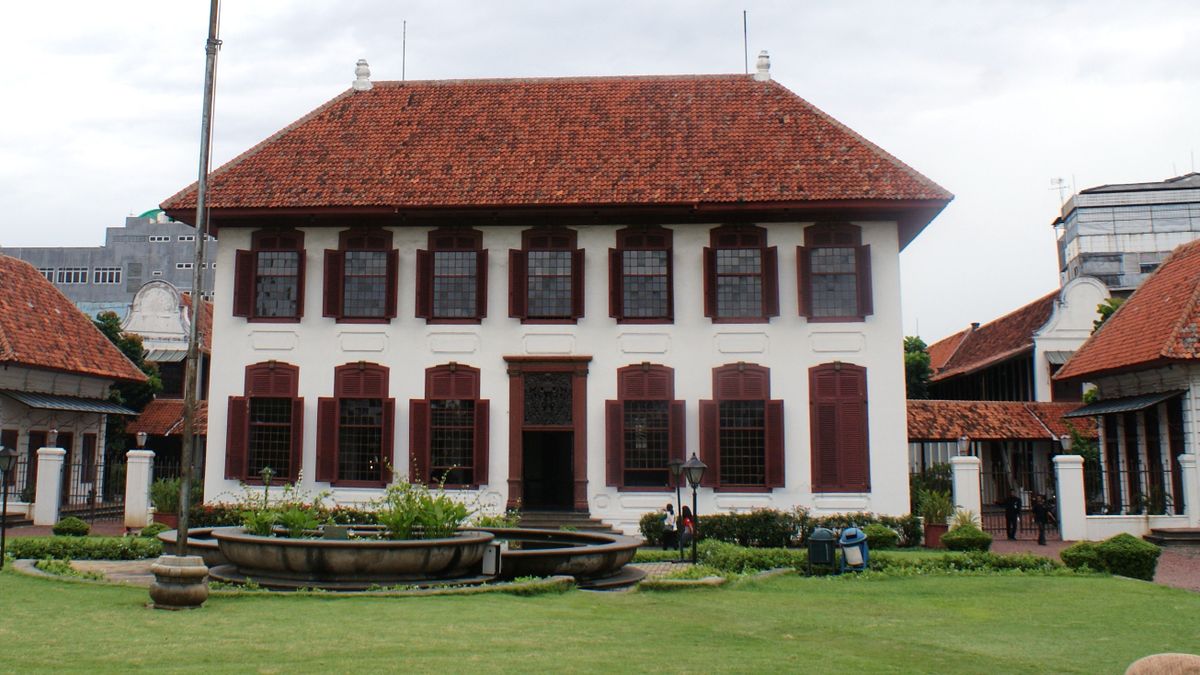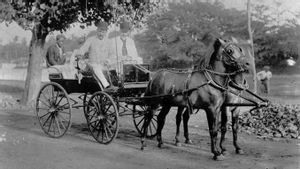JAKARTA - Amid the chaotic layout of Jakarta, the popularity of Kota Tua or Oud Batavia as a historical area has never been extinguished. Although some traces of the historical building grandeur have been replaced, the admiration for Jakarta as the 'Jewel of East' that many 18th century travelers echoed is still preserved to this day.
We can see the fantastic traces of history in the City Hall - now the Jakarta History Museum, the Red Shop, or the VOC spice warehouse which has changed its name to the Kebaharian Museum. Another magnificent building from the Dutch colonial era is Vila Molenviet.
The name Vila Molenviet may sound unfamiliar. However, if the building is referred to as the National Archives Building. The building, which has become a luxurious vacation home, is now the only building that has survived along Jalan Molenvliet, which stretches from Jalan Gajah Mada to Hayam Wuruk.
The buetenverblijven house or out-of-town house was built by Reiner de Klerk during his tenure as a member of the Indies Council in 1760. The choice of location for the house at that time was considered very ideal. Molenvliet was known as an elite residence in Batavia in the 18th century.
As revealed by one of the important figures in the writing of Jakarta history, Adolf Heuken SJ in the book Historical Places in Jakarta (2007), De Klerk used Vila Molenvliet as a residence as well as an office. Uniquely, De Klerk's building was inspired by the many closed colonial-style buildings. The construction has also been adapted to the tropical climate. So, the ceiling is high, complete with marble floors.
"Between 1777 and 1780, it was used as the official residence of the highest government officials. "Many guests have to go to De Klerk to take care of some personal business even though such activities were forbidden to all officials," wrote Adolf.
Switched Function
After De Klerk died in 1780, Vila Molenvliet was auctioned off and fell into the hands of a company official, Johannes Siberg. He lived in the house when the reign of government changed to France and England.
Later, the building moved to Lambertus Zegers Veeckens, Joan Cornells Mayer, to Leendert Miero. Unlike other wealthy owners, Leendert Miero came from among lowly Dutch soldiers. His intention to buy the house came from his grudge against the owner of the house 30 years earlier.
At that time, Miero was sentenced to 50 rattan blows because he overslept while guarding the gate of the De Klerk's yard. Since the sentence, Miero swore that if he was rich, he would buy the house. Miraculously, in 1818, Miero, who had switched professions as a goldsmith, bought this luxurious vacation home.
Revenge continued. Every 15 years, Miero invites the general public to celebrate his beatings in the courtyard of Vila Molenvliet. Then, Miero proudly joked, as G.H Nagel wrote in De Oudgast (1838):
In front of this house
The one I have had for so long
I once guarded the Governor General's residence
Imagine my good friends and believers
In this place and I still feel it
I got 50 hits on my back
Due to oversleeping time for service
Miero lived in the house until the end of his life. After Miero's death, Vila Molenvliet was sold to College van der Hervormde Gemeente. The house was dismantled and they switched its function to be a church and an orphanage. Iksaka Banu also immortalized the image of the change - from a house to an orphanage - in a short story entitled Variola in the book "Teh dan Pengkhianat" (2019).
In his short story, Iksaka Banu revealed De Klerk's former house as the largest orphanage in Batavia. Iksaka also described the admiration of the people during the Dutch colonial era for the buildings and the harmony in every corner of the room from Vila Molenvliet.
"I believe that Governor-General Reinier de Klerk was a millionaire in Batavia who had a taste for art. That's why I'm sure. The ugly Greek pillars that support this front room were built later. They look very different from the style, which mostly took on Baroque decorative elements," said Iksaka.
As the population grew up, the church council had no choice but to sell the building to the Dutch East Indies government. The area is considered no longer ideal for being a church or an orphanage. Then, in 1925, the house was restored to its old image. Its function was to become a landsarchief (Archive Building). After the independence of Indonesia, the name changed to the National Archives.
However, it was not long before the National Archives Building moved to a new location. Even so, the management remains under the control of the National Archives. Now, the VOC Governor-General residents building becomes a place for various kinds of activities. Such as corporate celebrations, weddings, and so on.
The English, Chinese, Japanese, Arabic, and French versions are automatically generated by the AI. So there may still be inaccuracies in translating, please always see Indonesian as our main language. (system supported by DigitalSiber.id)









